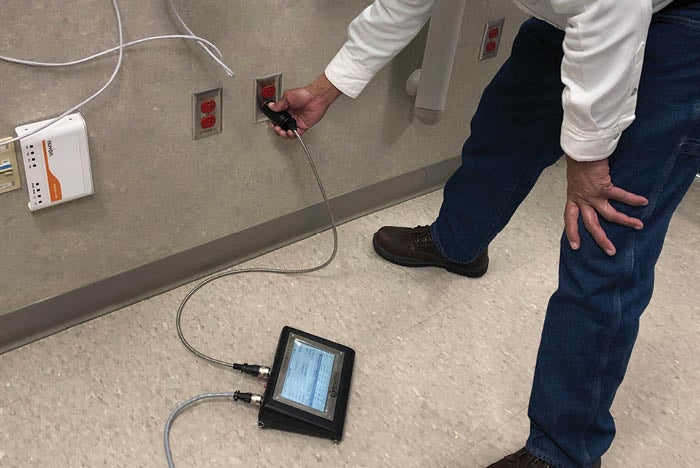Managing electrical outlets for patients and families
In the age when patients and families have a variety of personal electronic devices, health care facilities are challenged to provide safe easy access for charging of these personal electronic devices in accordance with the National Fire Protection Association’s NFPA 99, Health Care Facilities Code, requirements.
The NFPA 99-2012, Section 10.4, on “Non-patient Electrical Appliances and Equipment” refers to “Cord- and Plug-Connected Portable Equipment in the Patient Care Vicinity” and is summarized as:
- 10.4.2.1: “Non-patient care-related electrical equipment, including facility- or patient-owned appliances that are in the patient care vicinity and will, in normal use, contact patients, shall be visually inspected by the patient’s care staff or other personnel.”
- 10.4.2.2: “Any equipment that appears not to be in proper working order or in a worn condition shall be removed from service or reported to the appropriate maintenance staff.”
- 10.4.2.3: “Household or office appliances not commonly equipped with grounding conductors in their power cords shall be permitted, provided that they are not located within the patient care vicinity. Double-insulated appliances shall be permitted in the patient care vicinity.”
To address the needs of patients and families to charge personal devices, a safety risk assessment should be conducted to set policy and path for the institution. Consideration to the following methods to address safe charging means:
- On patient headwalls, utilize USB charging outlets (2A/2C ports), in a patient-defined color such as purple and at minimum include labeling for designated outlets.
- In family areas, utilize a combination hospital-grade, tamper-resistant duplex outlet with 1A/1C port in a “family”-defined color such as purple and, at a minimum, include labeling for designated charging outlets.
Designating a “patient/family” charging outlet with a color (such as purple) and labeling clearly identifies for the patients, families, maintenance and caregivers where the patients and families can safely charge devices.
This helps alleviate the condition where patients and families are plugging into the outlets needed for care of the patients and creates a clear intuitive way for policing the policy, meeting patients and family’s needs and keeping all safe.


